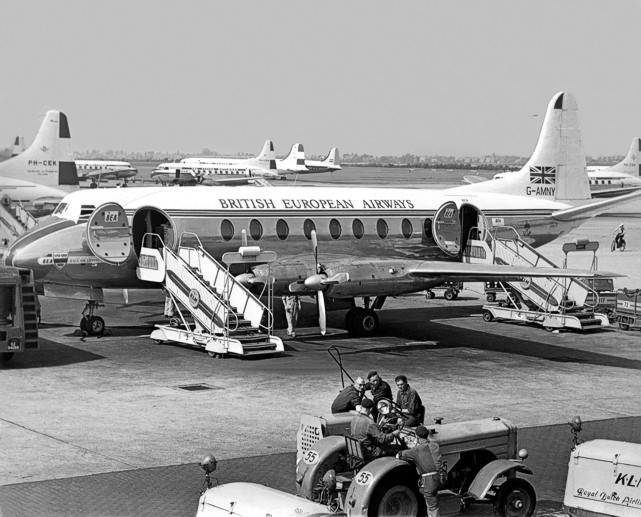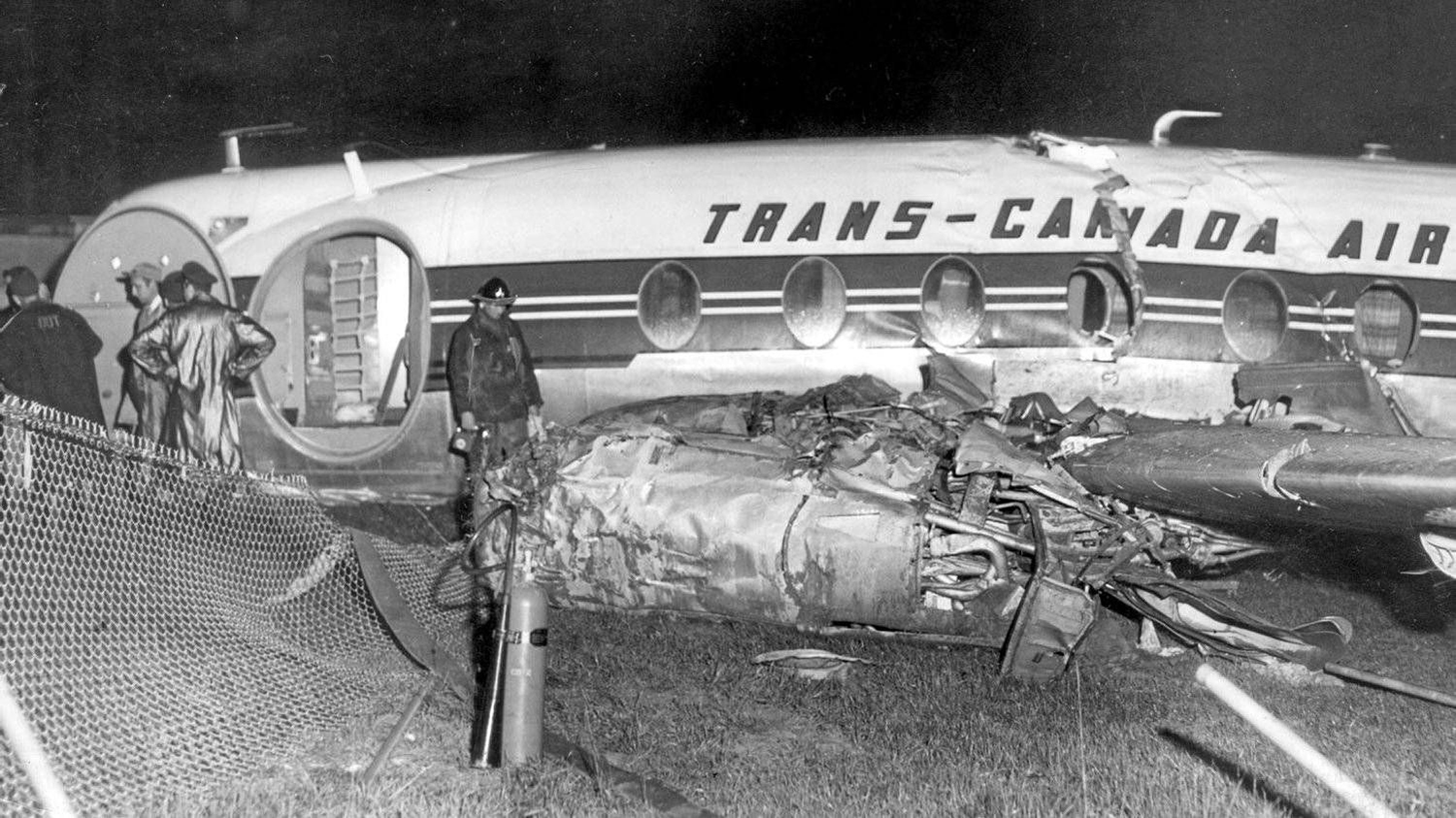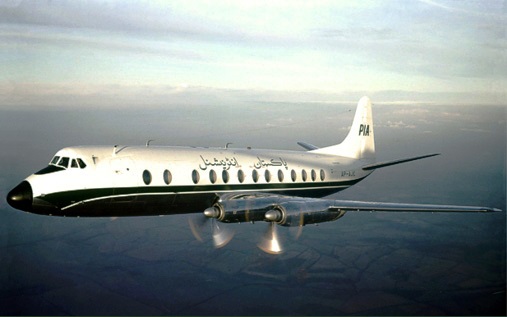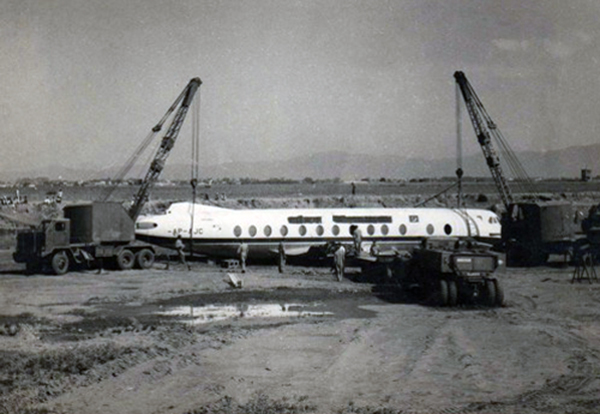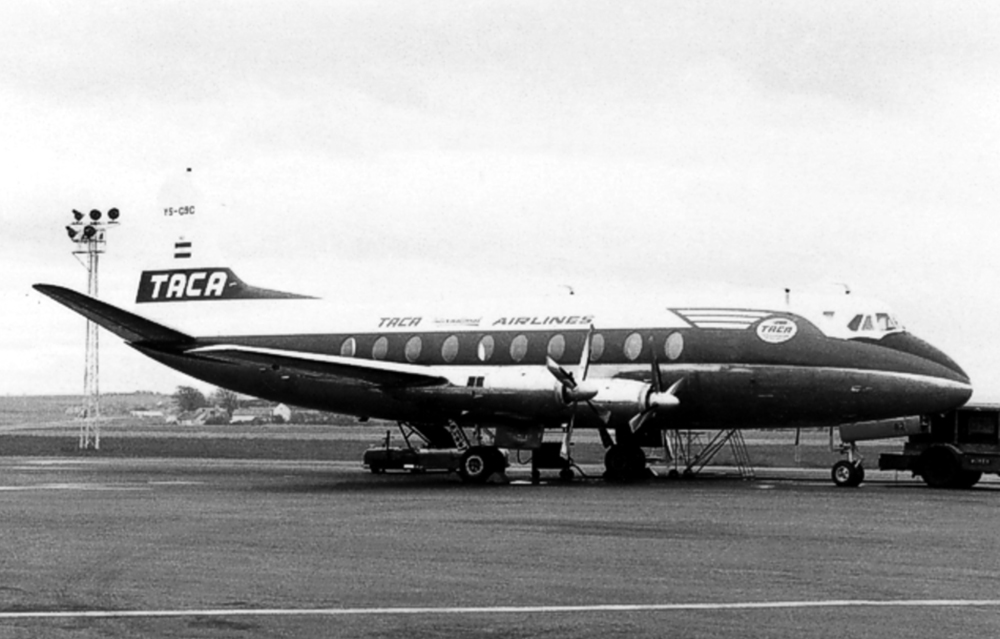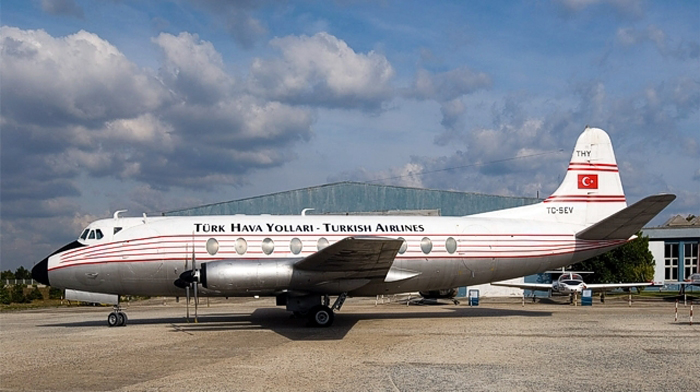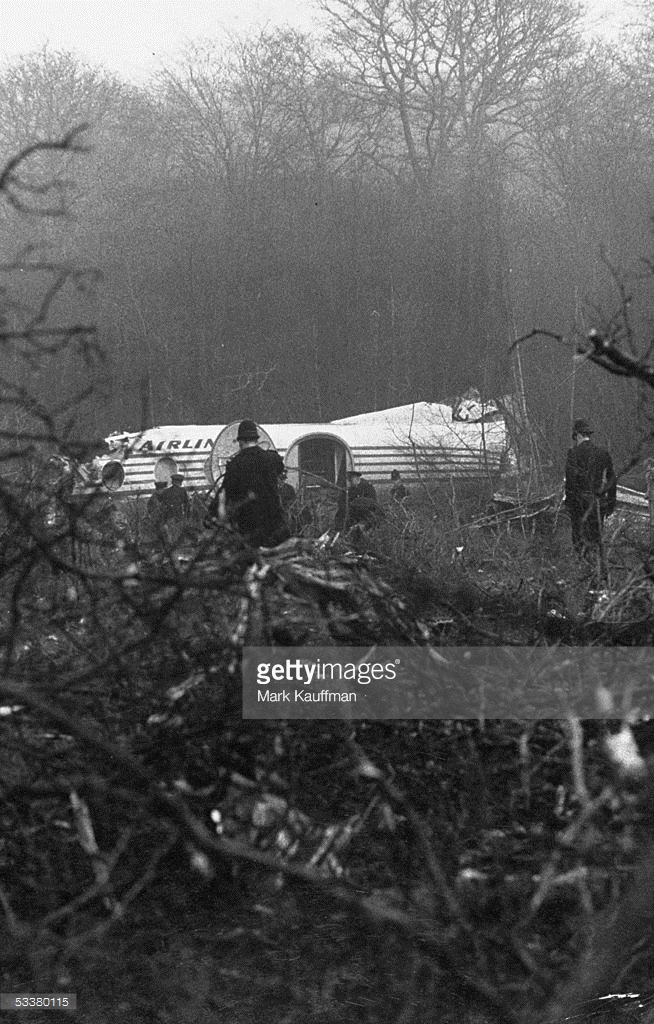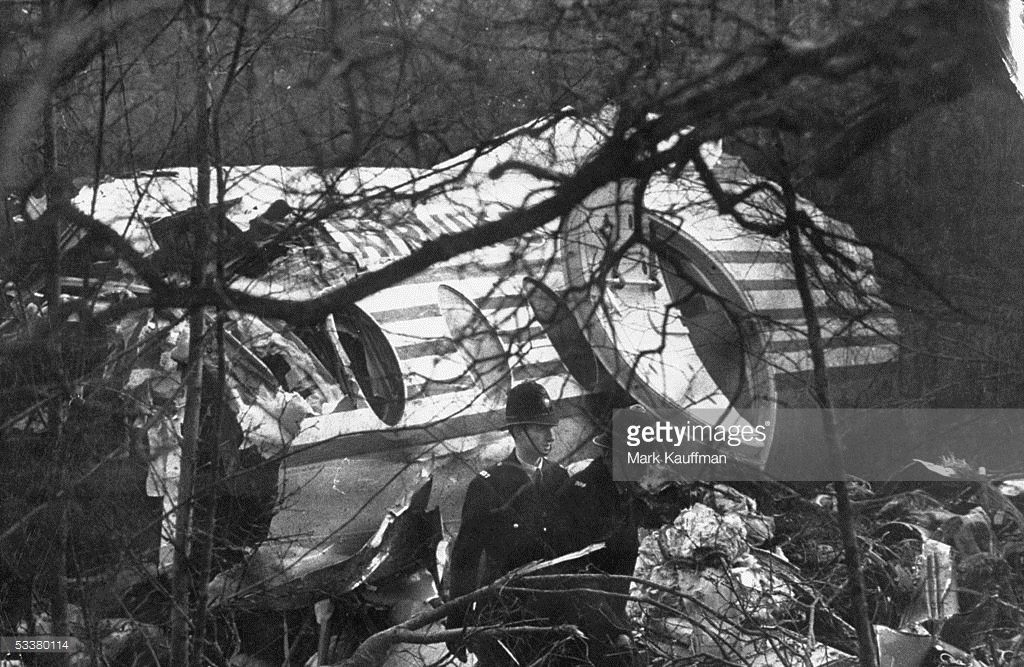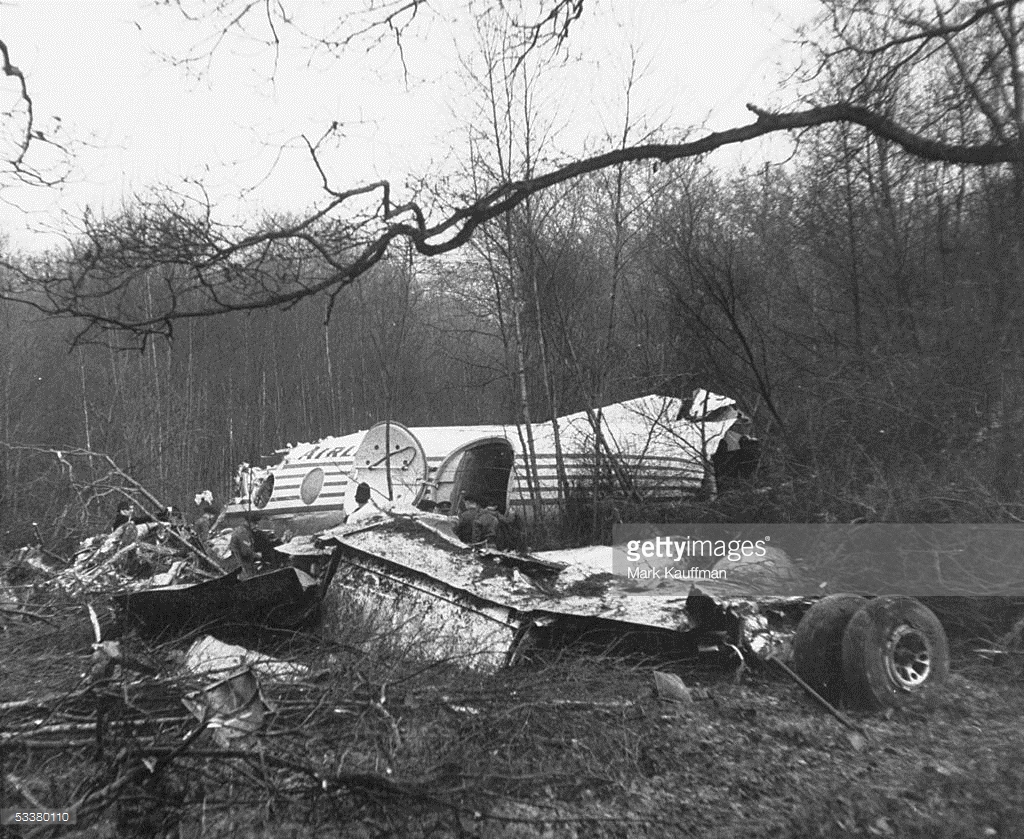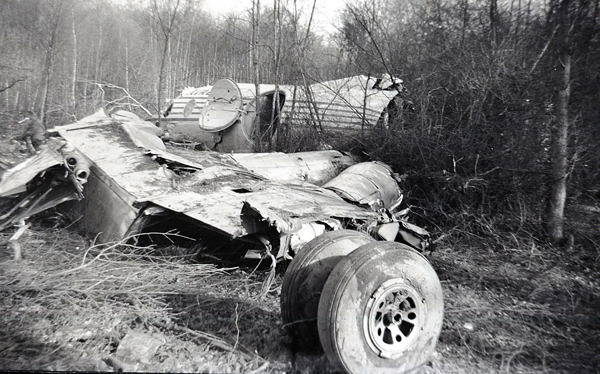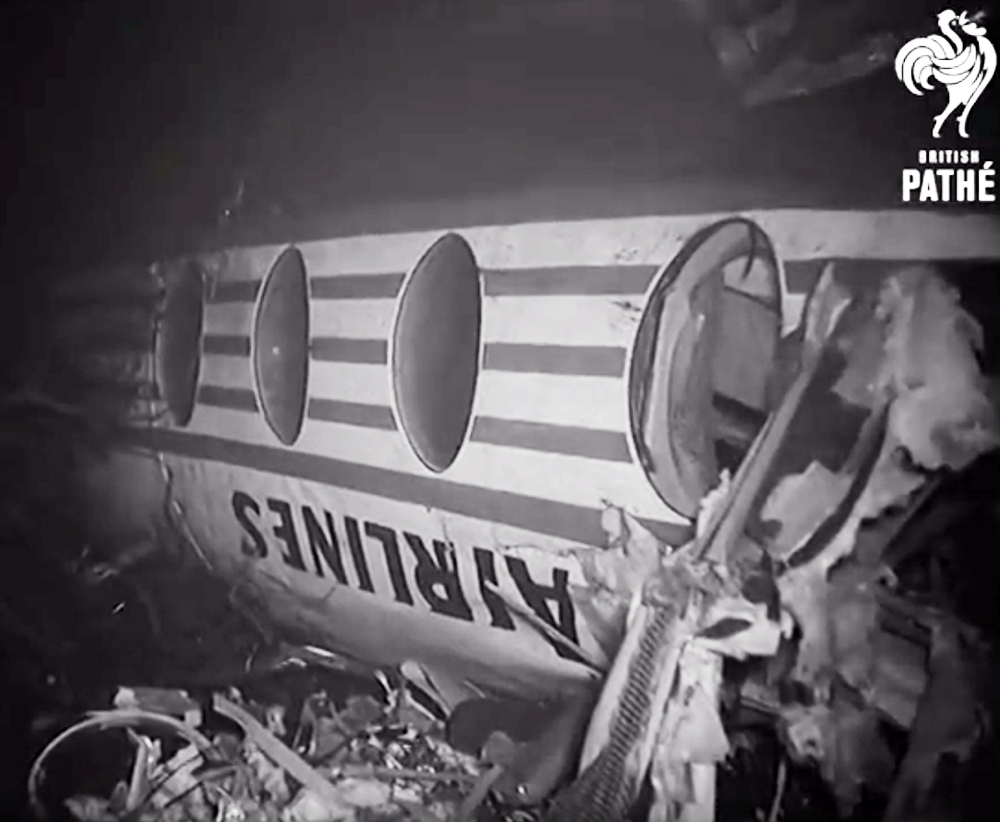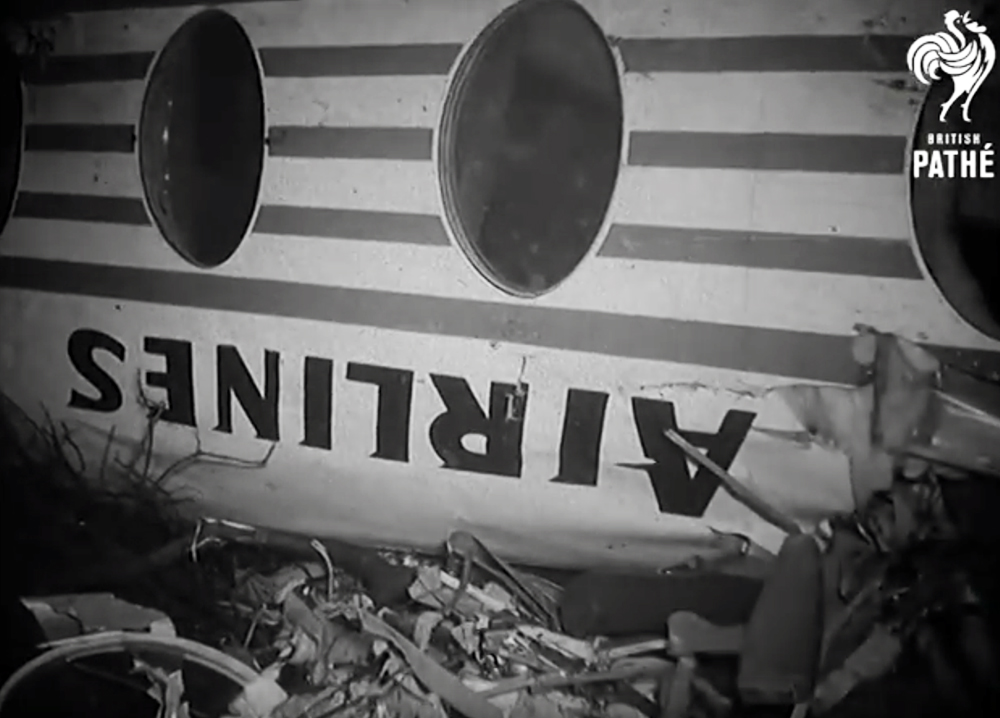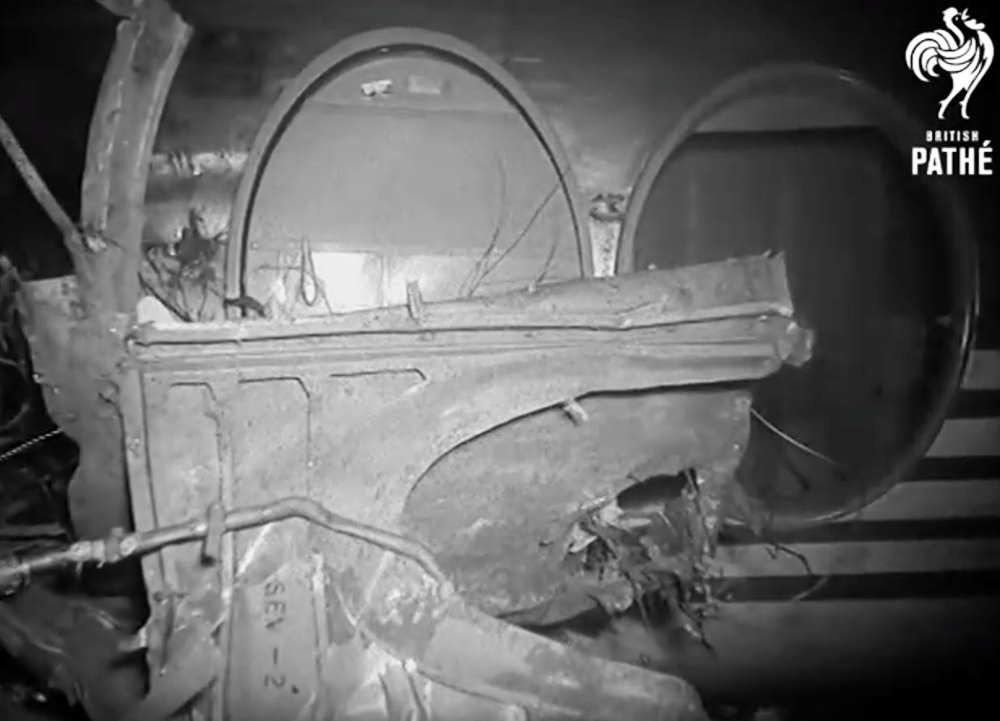Crash of a Vickers 802 Viscount in London
Date & Time:
Jan 7, 1960
Registration:
G-AOHU
Survivors:
Yes
Schedule:
Dublin – London
MSN:
169
YOM:
1957
Crew on board:
5
Crew fatalities:
Pax on board:
54
Pax fatalities:
Other fatalities:
Total fatalities:
0
Circumstances:
Upon landing, the nose gear collapsed. The airplane skidded for about 500 yards before coming to rest in flames. All 59 occupants were evacuated safely while the aircraft was destroyed by a post crash fire.
Probable cause:
The failure of Air Traffic Control to notify the captain of a critical deterioration in runway Visual Range during his final approach. In consequence he attempted to land in a visibility which gave him insufficient visual reference with the result that the nosewheels contacted the runway before the mainwheels thereby overstressing the nose wheel unit and fracturing its attachments.





